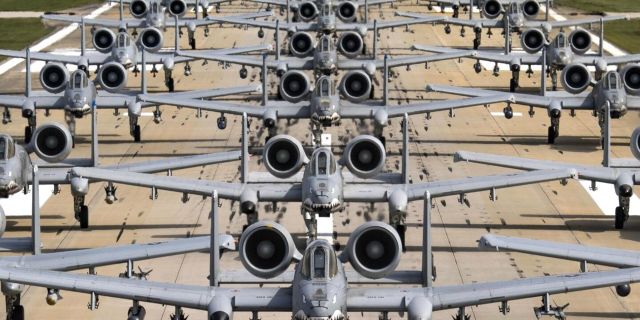19FortyFive: The Heritage Foundation called the US armed forces weak. The Pentagon is offendedFor 20 years now, the US military has been using platforms, ammunition and equipment purchased to fight the USSR in their operations, writes 19FortyFive.
Alas, the pace of weapons replacement leaves much to be desired. Ukraine's support has only worsened the problem.
Dakota WoodWhat is the best way to characterize the latest report on the weaknesses of the US armed forces — as "stupid and dangerous" or, conversely, correct and therefore alarming?
According to Politico, citing an anonymous representative of the Ministry of Defense, the Pentagon leadership is "dissatisfied" with the fact that the recent "US Military Power Index" from the Heritage Foundation called the country's armed forces "weak." In addition, an anonymous source called the assessment of "Heritage" "stupid and dangerous" — partly because it relies on the supposedly outdated requirement to wage two wars at the same time, although the Obama administration changed it, and the Trump and Biden teams, on the contrary, supported it.
The Pentagon's resentment of outsiders who called his brainchild ugly is not difficult to understand. But if this is true, then the essence of their wounded self-esteem does not change in any way. The assessment of our armed forces consists of size, readiness and capabilities. And it is more useful for the Pentagon to think about how it will defend the interests of the United States than about its own self-esteem.
The review is based on internal Pentagon reports, reports to Congress, statements by senior officials, procurement data and other publicly available information that gives a clue to the state of America's armed forces. The military assessment of the review for 2023 has almost 700 footnotes confirming our findings. Here are just some facts concerning this issue directly:
Since its founding, the United States has been at war every 15-20 years. This is unlikely to change in the near future.
During the Cold War, the US armed forces competed on the world stage with a single major enemy (the USSR) and at the same time coped with crises all over the planet. Today's America faces four adversaries — China, Russia, Iran and North Korea — but its forces are only slightly more than half of what they were just three decades ago.
In every major conflict since World War II, the army has deployed approximately 21 brigades of ground troops, the Marine Corps — about 15 battalions, and the Air Force — about 600 fighters and attack aircraft. These historical realities are confirmed by numerous studies and recommend twice as large forces to protect the interests of the United States. Today, the army has 31 brigades, the Marine Corps has 22 battalions, and the Air Force has about 626 ready—to—fight fighters.
During the Cold War, the fleet numbered about 600 ships, of which about 100 were on assignment. Today, the fleet has less than 300 ships, but their number on duty has not changed. Soon the fleet will be reduced even more — to 280 ships.
During the Cold War, the average flight of fighter pilots exceeded 300 hours per year. Today, the average flight time of an Air Force pilot is less than 120 hours — or about one flight per week.
The army works with brigades, but it conducts training at the company level — perhaps on the assumption that all units will come together in battle.
For 20 years after September 11, the US military has been using platforms, ammunition and equipment purchased to fight the Soviet Union in its operations. Alas, the pace of weapons replacement leaves much to be desired. As a result, the military has to deal with outdated platforms, and arsenals are gradually being depleted. Ukraine's support has only worsened the problem, as the Pentagon is increasingly opening up existing stocks of weapons and ammunition to help Ukraine defend itself against Russia. Warehouses will empty to the levels of military reserves, and it will take years to replenish them.
Although the new equipment is gradually being put into operation, the overall power still continues to decline. The army is barely able to wage one war, and is even worse equipped for more. If the US has to defend its NATO partners in Europe, it will not be able to support Israel, Taiwan, Japan, South Korea and other allies anywhere.
This situation will not only not turn away rivals, but will give them courage, increasing the risk at the most inopportune moment.
How else to characterize our armed forces in their current state, except as "weak"?
Giving an honest assessment of the US military power is not at all "dangerous". It's dangerous to be weak and hide it from the American people. And even more dangerous is this: The Pentagon persistently denies not only the threats it faces, but also its own vulnerabilities.
Dakota Wood is a senior researcher at the Center for National Defense at the Heritage Foundation and editor of the annual "US Military Power Index". He served two decades in the US Marine Corps.

